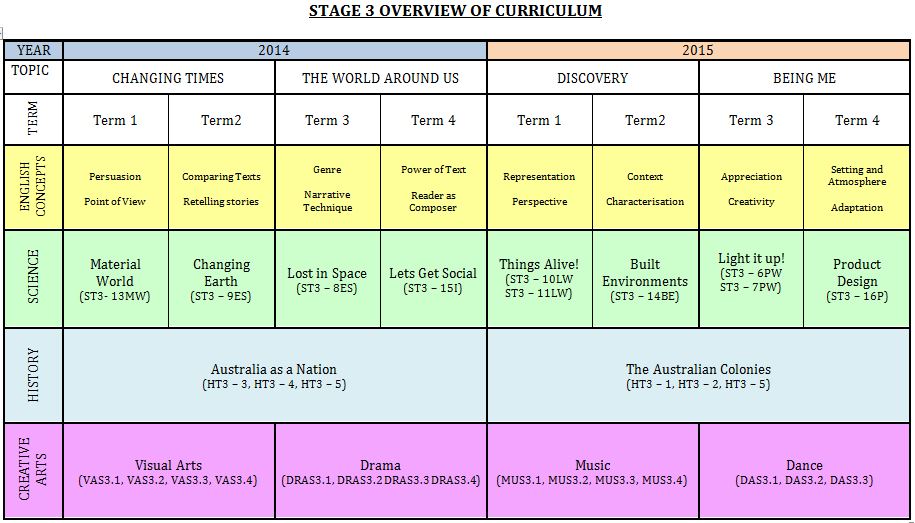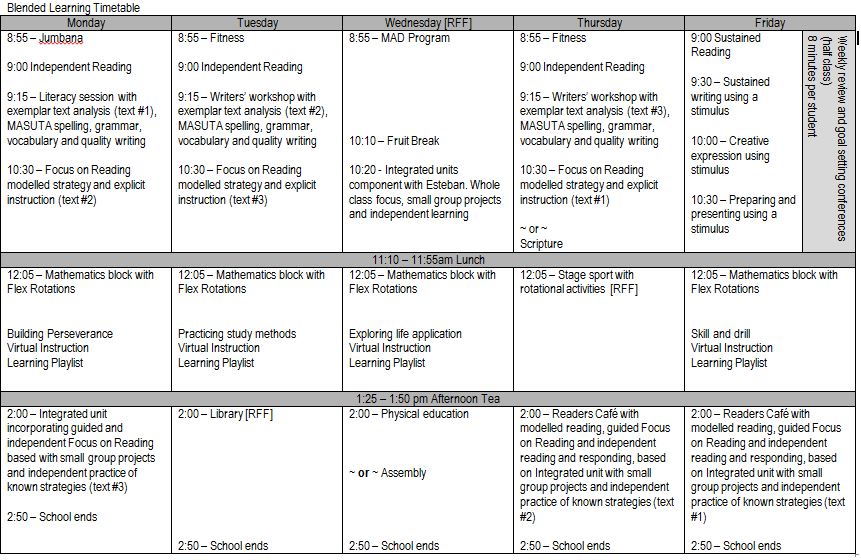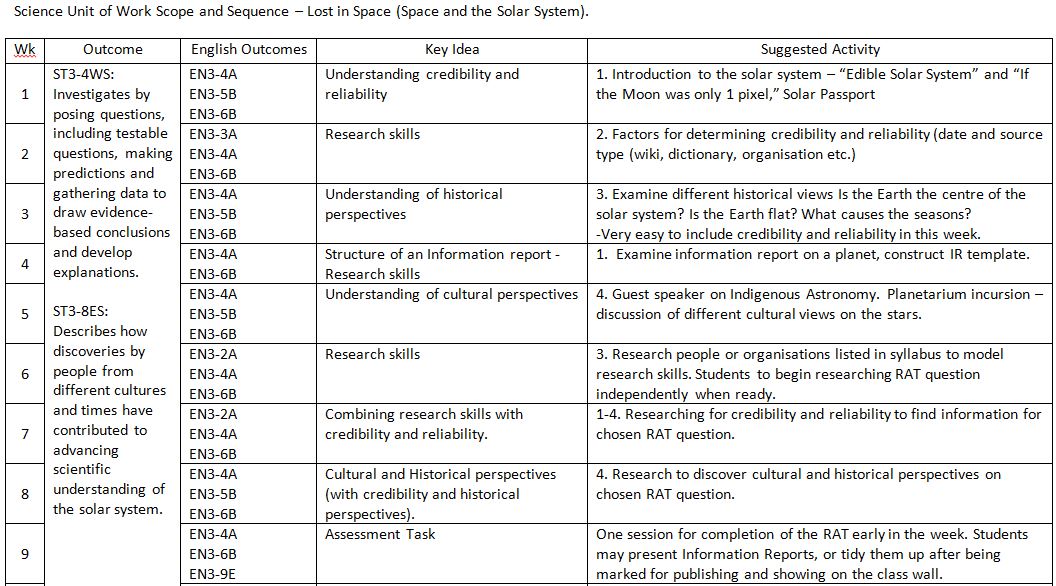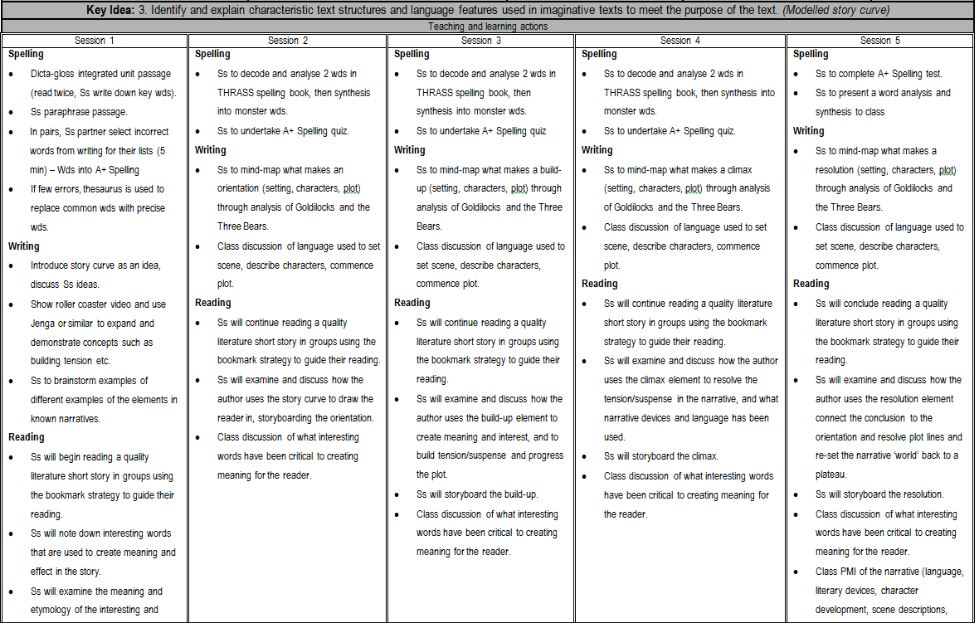|
When planning for a year, plant corn. When planning for a decade, plant trees. When planning for life, train and educate people. – Chinese proverb. This was supposed to be (and I suppose it technically still will be) the final post in this series on Planning for Learning, examining the make-up of the Teacher’s Program, that elusive document that I did not see or hear any hint of during my four year degree, up until my internship, when I asked my cooperating teacher about his, which launched a series of conversations that I felt were quite fruitful, challenging and educational. Part one of this series was about the first component of the Teacher’s Program, namely, the Vision, and examined the Teaching Philosophy, Class Analysis and the Explanation of Special Programs therein. Part two examined the Planning component, and different methods of curriculum planning, particularly thematic planning. This final part was supposed to examine the Monitoring component, including Tracking across the Literacy and Numeracy Continua, keeping assessment records, creating learning plans and class groupings. In sitting down to write this post, I have realised that I do not know enough to expound upon what is or is not good or even best practice when it comes to the Monitoring portion of the Teacher’s Program. So this post will instead simply identify some of those methods that I have come across, and I will ask you, my readers, to provide feedback on the tools and methods that you utilise to complete this section From what little I have seen in practice in regards to tracking on the Literacy and Numeracy Continua, one effective method appears to the use of sticky notes, or post-it notes. For example, when designing a rubric for, let’s say, an English assignment, you may assign a particular cluster for different components for the ‘pass grade’ (whether you use A-E, or another variation of grading) of that assignment. This then allows you to scale up or down for the actual output of each student, making note of where that student is on a particular stream through use of a sticky-note, which simply has the students name, and which is then placed in the relevant cluster on the Continuum chart. If you decide, for example, that Cluster 9 is the ‘pass’ mark for Aspects of Writing for a particular assignment, you can then adjust a student’s placement on the continuum for that skill set based on their output in that assignment and in consideration of previous demonstrations of ability. You can also make a note elsewhere, whether it’s in a spreadsheet or on a tracking class role in order to keep a consolidated record of ‘marked’ clusters across the school year. I’ve seen that done quite effectively as it allows you to move students around at any point, for each of the skill sets, and is quick and easy to do so. That leads, then, into keeping Assessment Records. The vast majority of teachers with whom I’ve had discussions about this keep a class role with students’ names down the left, the name of the assignment/learning output/test across the top and the mark, of whatever variety in the appropriate matrix square. This can be particularly effective when done such that it allows the side-by-side placement and therefore comparison of marks for similar tasks (whether by KLA, skill or concept) across the year. I would love to hear from anyone who is doing things differently in this regard, as to how you do it. Learning Plans, from my limited experience, appear to be done via a pro-forma which seems to vary from school to school, though, again, I would love to hear from anyone who is creating custom Learning Plans for their students. Class Groupings is something that very much differs from school to school, and even teacher to teacher. There are a number of teachers that I’ve seen who still utilise rows of desks, those who use table-groups of four or six students, those who allow students to sit wherever they wish to, set groups for reading/mathematics/spelling (whether leveled or mixed ability) in their day to day teaching. I’ve seen a lot of teachers who utilise a variety of grouping strategies without realising they are using a particular strategy, such as DeBono’s Hats, think-pair-share etc., and with varied levels of success. My understanding, from conversations with my cooperating teacher about this component of the Teacher’s Program is that it should contain a list of those strategies you envision using, when (as a general indicator), and why it is an appropriate strategy. But again, I’m open to hearing other thoughts on this structure. The Teacher’s Program can be a huge working folder containing the complete set of resources a teacher possesses. However this seems unwieldy, unlikely to be reflected upon with any sort of regularity, and unlikely to be usable as a true program, wherein a casual teacher can open it up and get a general idea of the content that is being covered in the classroom at that point. These last three posts have been my attempt to solidify my own understanding of what the Teacher’s Program can be based upon a series of conversations with my internship cooperating teacher, and my observations of a few examples since then. It will most likely be 2015 before my next post, so have a safe and happy Christmas break, and as always, thank you for reading. See here for the list of articles in this series. Reference list
de Bono Thinking Systems. (n.d.). Six Thinking Hats. Retrieved April 8, 2014, fromhttp://www.debonothinkingsystems.com/tools/6hats.htm
0 Comments
“He who fails to plan, is planning to fail” – Attributed to Winston Churchill First of all, I would like to apologise for such a large gap between posts. This last few months has been very hectic with the conclusion of my Honours research project, and the process of conducting the data analysis and writing my dissertation. It has now been submitted, and I am now awaiting the results to come back from the examiners, which I am hopeful of receiving prior to Christmas. I am feeling quietly confident about getting a strong result, and have plans for further research in mind already. In my previous blog, Planning for Learning Part 1, I wrote about the first aspect of the Teaching Program, which is the Vision, encompassing the Teaching Philosophy, the Situation Analysis and the Explanation of Special Programs that are running in the class. This post will be focusing on the second component of the Teaching Program, which is the Planning segment, made up of the following sections:
This post will work through what each of these consists of, how to create them, and why they are a vital part of the Teaching Program. 1. Overview of Curriculum The Overview of Curriculum provides an opportunity to plan holistically, mapping out when outcomes will be covered within each KLA across the two years and linking the KLAs together conceptually, creating integrated units. When complete, you have a visual planning map, that enables anyone can pick up and utilise, either in its original form, or modified to suit the specific context. What this looks like will depend on how you plan, and how you think, in as far as linking the concepts together. Below is an example of what one might look like, showing a portion of a Stage Three Overview of Curriculum. 2. Timetable The timetable is simply your time-to-teach, or when you plan to teach what, but will include Release from Face to Face (RFF), scripture, assemblies, sport etc. What your timetable looks like will vary according to your school’s timetabling processes, priorities and the allocation of time to Sport, Physical Education, RFF, Library times etc. This is an example of what it might look like: The timetable will vary from school to school, according to how time is allocated to stage or whole-school sport, assemblies, scripture and other school specific programs, such as the fitness program you can see in this example. This is also where the utilisation of integrated units allows for multiple concepts/skills to be examined in the classroom, covering the required syllabus content in a significant way, allowing for transferal of skills and conceptual knowledge across learning and life domains. 3. Scope and Sequence The scope and sequence for any KLA or unit of work will be utilised, usually, in one of two ways. The first will map out when skills, concepts and knowledge will be covered in the learning across a period of time, usually a term, as can be seen in the below example. You can see the specific outcomes that are being drawn upon from the NSW Science and Technology syllabus (Board of Studies NSW, 2012), as well as the English outcomes that are being focused on each week for this unit. There is a key idea that drives the learning for the week, and then some suggested activities to provide a starting point. The numbers at the start of suggested activities are a reference to which piece of content that activity conforms to from the Science and Technology syllabus. This method of implementing a scope and sequence provides a Launchpad for the week, with the central focus and a suggested activity, leaving it to the teacher to make a professional judgement as to how they provide the learning for their class, based on their specific context. The other form that is commonly used looks something like the below sample from a Stage Three Program. It utilises Bloom’s Taxonomy (Krathwohl, 2002;) to guide the framing of tasks across the KLAs or an integrated unit. You can see in this example that for the English KLA, based on a unit around social interactions and communication, the specific syllabus outcomes that will be targeted through the learning, the literacy concepts that are being incorporated, and the tasks that will be used to help facilitate learning across the different levels of thinking. I have also seen this form of scope and sequence combined with Gardner’s Multiple Intelligences to form a learning matrix. Anecdotally, I have seen this labelled as a Pirozzo Unit, named after Ralph Pirozzo from Promoting Learning International, however I must note that it is not a structure I have much familiarity with, though I can see how it has some potential to be useful. 4. Daybook / Weekly Plan The details of how a Teachers’ Daybook or Weekly Plan is implemented vary almost as much as the weather and with similar levels of vigorous discussion as to the benefits and disadvantages of various formats and structures. There are advocates and critics for every form of this process that I have come across in my short time in the profession. I am going to work with the assumption that most teachers are familiar with the standard diary format (which in itself contains significant variation depending on who you talk to). Personally, I believe a combination of different methods is the better way to go, as this allows you to cover the macro (school or stage wide events, professional development events etc.) with the micro (specific session objectives, materials required etc.). The macro events should be addressed in a Teacher’s Planning Diary or calendar to allow for an overview of events, however the specific day to day learning activities and goals can be tracked in a fashion similar to the below planner. This is a fairly simple planner and is quite versatile. Across the top row you can input some basic details including the term, the week number and the core outcome being targeted that week. The next row specifies the key concept/skill/idea being examined and may include both a long and short-form. The remainder of the planner outlines the specifics of what is being done in such a way that it is succinct, but any teacher could walk into the class and take over from where you have left off. You will note in this screenshot that the columns are labelled not by day, but by the session number. This allows for the unpredictability and fluidity required of teachers due to disruptions. It is designed to be printed out and as each session is delivered, dated and signed to indicate that the specific session has been covered. This allow for disruptions as you are then able to work through the sessions, doubling them up, combining them or making other alterations as required due to interruptions. This particular screenshot is from an English day-book, and is broken down into three different components; however the specific layout of the planner can be altered to suit the specific context. You can see, however, that the descriptions are quite brief, and that there is a liberal use of abbreviations in order to save space. I have seen variations of this that include an equipment/materials list of either the week as a whole, or on a session by session basis, as well as an extra row that breaks down the overarching goal for the week into its constituent components, in this case, for reading, writing and spelling. This format lends itself well to Integrated Units of work, due to the nature of the layout. This is of course only one of many options, and I would be very interested to hear what other formats people are using to help plan their teaching and their students’ learning. See here for the list of articles in this series. “To infinity…and beyond!” -Buzz Lightyear, Toy Story. As I mentioned in my previous entry, I am undertaking the Honours stream as part of my degree. My research, after funnelling it down from is the degree worth doing? has become an investigation into the beliefs of pre-service teachers about the Arts in education and how those beliefs have been shaped by discourse and experiences, both personally and through the initial teacher education program, and the positions taken-up by pre-service teachers as a result. The literature that I’ve read thus far indicates that the benefits of the Arts in education are well-known and acknowledged, however there is a gap in what is understood about the beneficence of the Arts in education, and the take up of the Arts in pedagogical practice.
The broader area of is the degree worth doing is something that I plan to return to/continue examining in the future, though I suspect that the focus area will change, and it seems prudent to stay in touch with what is happening in education research through an online professional learning network combining social media and the longer form of blog articles. I also intend to use the blog as a platform for professional reflection as my practice evolves through the combination of continued pedagogical practice, professional development, educational research – both my own and others - and hopefully I will receive critical feedback from other educators through this medium. I will be considered a new scheme teacher here in Australia, and accordingly will be required to conform to the AITSL accreditation process, part of which will inherently involve, I believe, remaining up to date with twenty-first century teaching practices, including challenge/problem based learning, ICT integration, KLA curriculum integration, flipped classrooms, self-directed learning and the like. The school at which I am undertaking my final practicum has a class trialling 1:1 iPads, and the Executive have advised other teachers in the school that they can take part in the trial if they present an action research project that it will be trialled under, as that was one of the parameters for the trial already underway. I am incredibly excited about what I’ve seen so far, as it represents my understanding of what education should be, based on what I’ve been hearing about twenty-first century learning for the last few years over the course of my degree. The plan is to excel during my internship (I certainly don’t plan to fail or be mediocre…no Ps get degrees for me, thank you very much. (That’s the (unjustified) snob in me coming through)) and sit down with my cooperating teacher and the principal, who I have formed a strong working relationship with, and put forward an action research project indicating how I would utilise and track usage of and the results of 1:1 iPads and the ‘anywhere, anytime learning environment that it would create, so that if there are any full time teaching positions coming up, that my name is at the very least, towards the top of the list of contenders they have in their minds. Ambitious, I realise, likely naively so, given that I will also be in the process of conducting my Honours research, but I’ve found that I do my best work under a bit of pressure. Also, if a career in educational research is part of my future, then from what I understand, it’s quite common to have multiple ‘pans on the stove’ at any one time. So that is where my focus will be moving to next; the flipped classroom, associated pedagogical practices, and the ‘anytime, anywhere’ teaching mindset and the challenges of changing planning/programming/teaching practices accordingly, and it very much like going down the rabbit hole in Alice in Wonderland, or diving into infinity and beyond, as Buzz Lightyear likes to say, as I suspect that no matter how much reading I do, there will always be more to learn. Some names that I’ve come across in my own readings, or had recommended to me as being highly relevant, insightful, challenging or futuristic in their thinking, include Sir Ken Robinson, Seymour Papert, Sugata Mitra and Ralph Pirozzo. There are of course many others at the forefront of education research who are helping to pull the education system kicking and screaming into the twenty-first century, but those are the ones that come to mind at the moment. Feel free to recommend others. I’ll be aiming for weekly blogs during this ‘introductory’ phase, and accordingly my next post will be next weekend, and aim is for it to be an elucidation of my teaching philosophy. Thank you for reading. See here for the list of articles in this series. |
Categories
All
|
Support |
© COPYRIGHT 2015. ALL RIGHTS RESERVED.
|





 RSS Feed
RSS Feed